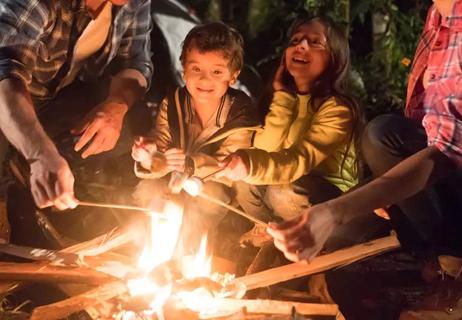Make sure your wood has been split and stored for at least 6 months

When the weather outside turns colder, there’s nothing cozier than a warm, crackling fire in your fireplace and a steaming cup of tea in your hands. But a wood-burning fire in your fireplace can cause health problems, especially if you or a family member has a history of lung disease.
Advertisement
Cleveland Clinic is a non-profit academic medical center. Advertising on our site helps support our mission. We do not endorse non-Cleveland Clinic products or services. Policy
There are potentially serious adverse health effects when you breathe in smoke from wood fires in your home fireplace. That’s because smoke from these fires contains small particles that can get into your eyes and respiratory system and the result can be a cough, burning eyes, a runny nose and illnesses such as bronchitis, says allergist and immunologist Sheila Cain, MD.
“Small particles less than 10 micrometers in diameter pose the greatest health problems because they can get deep into the lungs,” says Dr. Cain. “Some may even get into the bloodstream.”
Among these particles are fine particles, which are smaller than 2.5 micrometers in diameter, and these fine particles can affect your lungs. Wood smoke can also contain several toxic substances such as benzene, formaldehyde, acrolein and methane.
“It’s important to limit your exposure to smoke,” says Dr. Cain. “Exposure to wood-burning smoke can cause asthma attacks and bronchitis and also can aggravate heart and lung disease.”
People with heart or lung diseases, diabetes, children and older adults are the most likely to be affected by breathing particles in the air. Wood smoke has health effects like lung cancer, wheezing and premature death, too.
Advertisement
“If someone living in your home has a history of lung disease, such as asthma, try to avoid using of wood-burning fireplaces and wood-burning stoves,” says Dr. Cain. “Even healthy people may experience temporary symptoms from exposure to elevated levels of air particles that a wood fire creates.”
In addition to the fireplace smoke that can be released inside the home, research has shown that up to 70% of smoke released via the chimney re-enters your home.
If you’re using a fireplace and smell smoke in your home, the fireplace probably isn’t working as it should, according to the U.S. Environmental Protection Agency (EPA). If you do decide to use your wood-burning fireplace, the EPA has these suggestions for safer fires:
“If you’re thinking about switching to a gas fireplace to avoid the health hazards of a wood-burning fireplace, gas fireplaces also may affect indoor air quality,” she says. “They emit nitrogen dioxide, which is a respiratory irritant.”
The American Lung Association recommends using natural gas stoves and heaters instead of wood-burning fireplaces to heat your home or water. If you do go this route, make sure they’re fully vented outdoors to keep irritants out.
One way you can reduce your health risks with burning wood in your home is to use newer fireplace inserts. Those manufactured after 1992 are significantly cleaner-burning than older models because of federal air quality regulations that went into effect at that time, according to the EPA.
If these newer appliances are properly installed, well-maintained and used correctly, they can improve air quality – and consequently, help reduce risks to your health.
Advertisement
Learn more about our editorial process.
Advertisement

Breathing in toxic smoke can lead to serious health problems

Watch the weather, keep lines of communication open and make sure everyone on board has access to a personal lifejacket or flotation device

From bug bites and blisters to sunstroke and swimming safety, here’s how to stay well this season

From split lips to splinters, a little first aid can get your kiddo back on the swing set in no time

Breathing in unhealthy air can harm your lungs, heart and more

Establish rules and have a safety plan in place

As temperatures increase, so does the need for safety precautions

Prevent irritation, illness and more by using pool chemicals the right way

Start having sex about 72 hours before ovulation, then at least every other day during your fertile window

Attachment theory suggests that your earliest relationships shape connections throughout your life

It isn’t a recognized mental health disorder, but research shows that problematic social media use can negatively affect your mental health, self-esteem and sleep